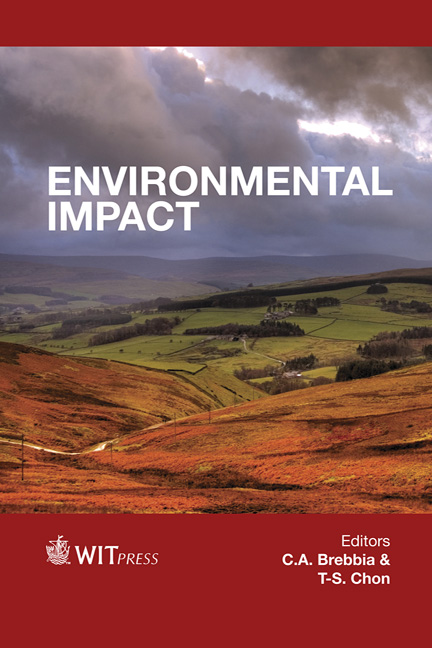Evaluation Of Single And Interactive Toxicities Of Lead And Iron Using Filtration Rate Of Zebra Mussels (Dreissena Polymorpha)
Price
Free (open access)
Transaction
Volume
162
Pages
9
Page Range
577 - 585
Published
2012
Size
3,016 kb
Paper DOI
10.2495/EID120501
Copyright
WIT Press
Author(s)
N. Kováts, N.-A. Abdel-Hameid, K. Kovács & J. Padisák
Abstract
The filtration rate of zebra mussels (Dreissena polymorpha), as a sensitive biological end point, was used to evaluate the toxicity of lead and iron. Zebra mussels were exposed individually to serial levels of lead and iron (800, 1000, 1200, 1400, 1800 μg L-1). The inhibition of filtration rate was determined after 24 h. The bioassay revealed that the effective concentration causing filtration inhibition 1% (EC1filtration), 5% (EC5filtration ), 10% (EC10filtration), 50% (EC50filtration) and 99% (EC99filtartion) of Pb and Fe to D. polymorpha were 427.072, 601.310, 721.648, 1373.448, 4416.951 μg L-1 and 409.908, 571.420, 682.141, 1274.149 and 3960.532 μg L-1, respectively. The ECx values recorded for Fe were higher than those recorded for Pb. Therefore, Fe was found to be more toxic to zebra mussels than Pb. The interactive effect of these metals was examined by testing the inhibition of filtration rate of zebra mussels exposed to 1:1 mixture of Pb and Fe. It was established that their interaction was synergistic. The results show that D. polymorpha filtration rate can be a sensitive end-point for assessing ecological risk of Pb and Fe as environmental contaminants. Keywords: metals, interactive effects, ecotoxicology, zebra mussels, filtration rate. 1 Introduction Freshwater and marine bivalves are used globally as bioindicators of water quality and as ecotoxicological test organisms [1–3]. Zebra mussels (Dreissena polymorpha) are sessile organisms that filter the water columns and live attached
Keywords
metals, interactive effects, ecotoxicology, zebra mussels, filtration rate.





